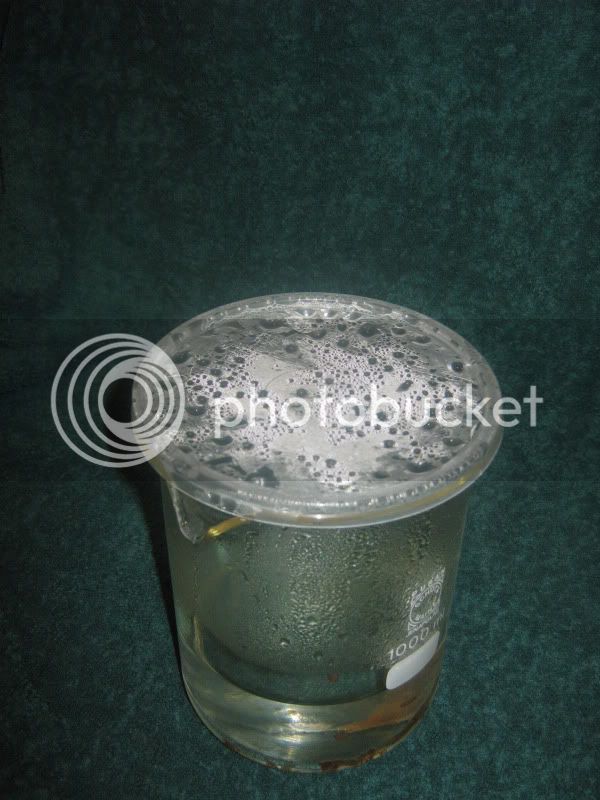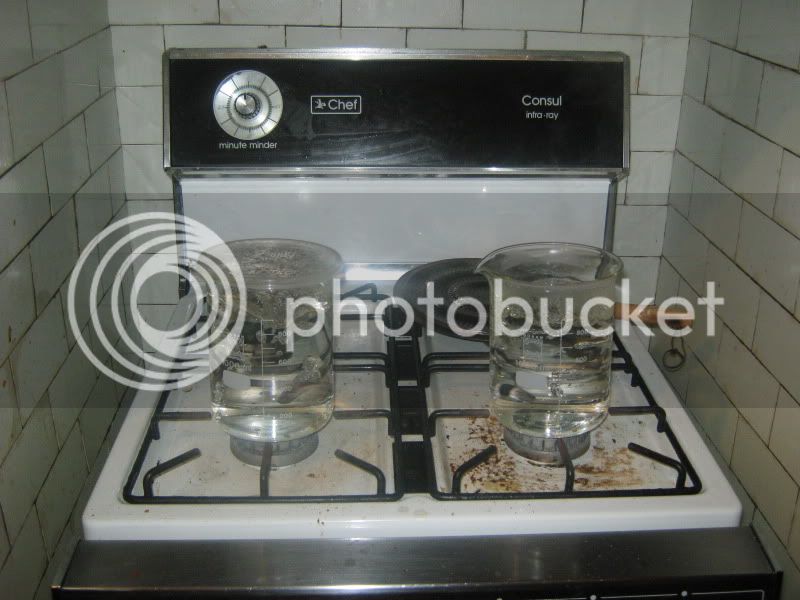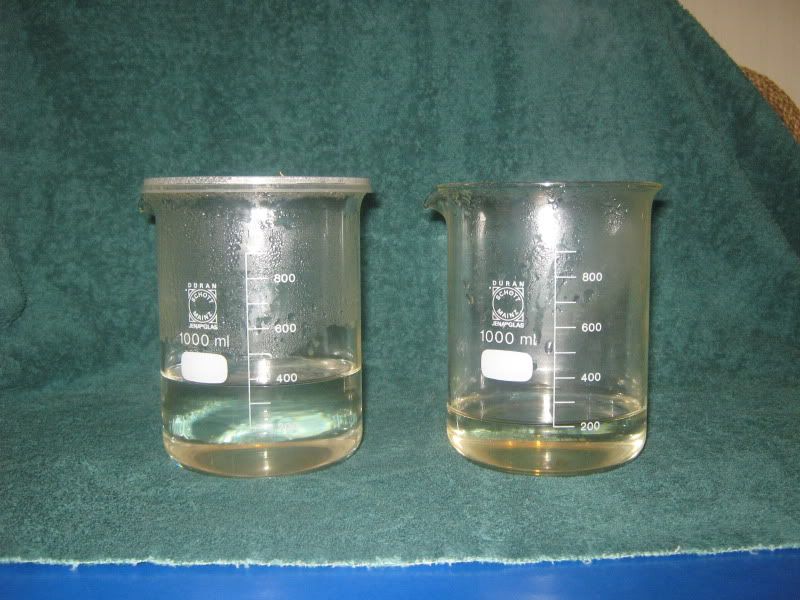Thirsty Boy
ICB - tight shorts and poor attitude. **** yeah!
- Joined
- 21/5/06
- Messages
- 4,544
- Reaction score
- 106
Ok, so while merrily arguing with Nick in another thread with evaporation in the title, I have also been having grand chicken cacciatore that my lovely wife made for dinner and annoying her in the kitchen while doing a couple of benchtop experiments on evaporation rates.
Just to be clear though - so as not to make it seem like I am carving off a separate thread in which to continue arguing with Nick in a more concentrated fashion, I have not and don't really intend to cover the particular evaporation topic we have been bickering about about.
What I am interested in is this.
Can Evaporation Rate be changed by adjusting your boil vigour via increasing or reducing your applied heat??
One that's always annoyed me. I am often assured that the primary factor in evaporation rate is the diameter and thus surface area of your brew kettle. Boiling harder or softer will either not or only very minimally change the amount that you boil off. I am sure that this is rubbish - its plain to me that if you boil harder, more will boil away. So here's my little test - take it with the grain of salt that I am trying to confirm my pre-conception rather than simply seeking raw data.
Start with 2 x 1L Schott Duran beakers, obviously not identical, but pretty damn similar - filled to the 900ml line. Bring to a hard boil on separate burners of the stove.
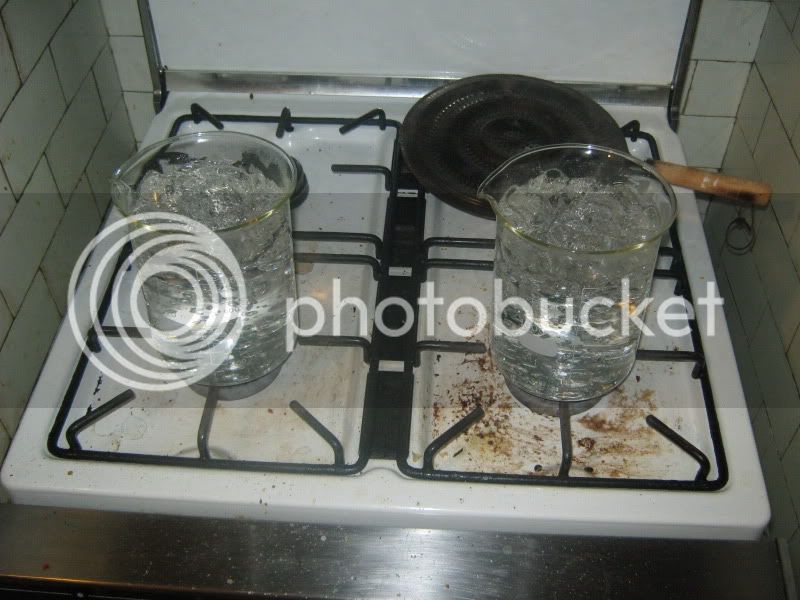
Once boiling, turn off heat momentarily and adjust back to the 900ml line with boiling water from the kettle
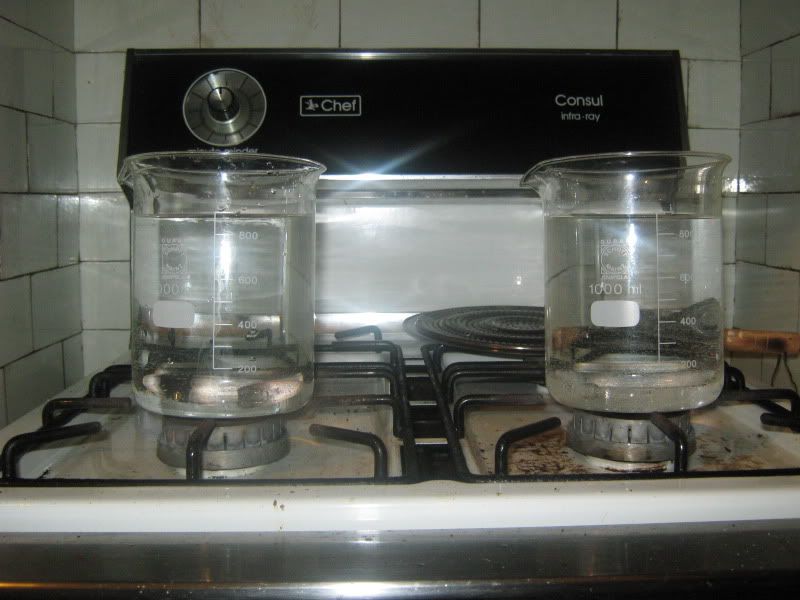
Bring back to full boil very briefly, then adjust heat down on one burner so the water is boiling actively but "softly" - make the other beaker boil "hard"
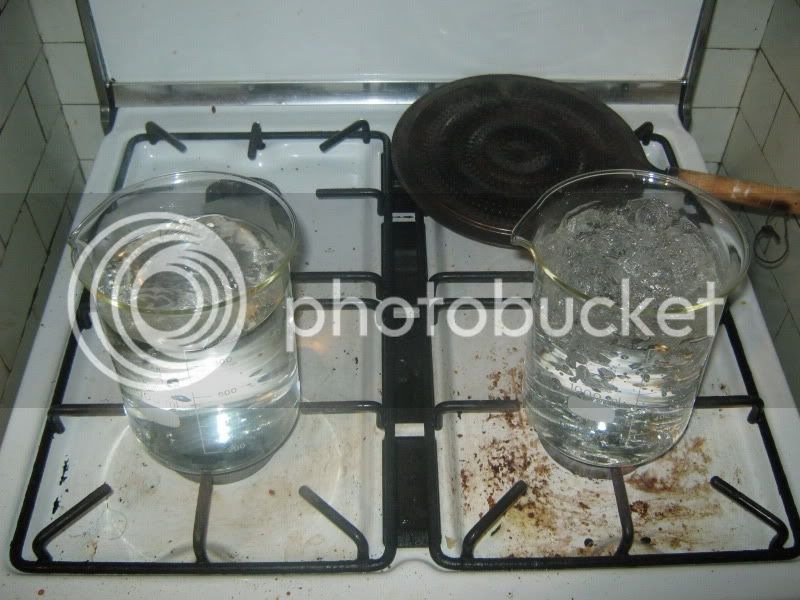
Photos are a hard way to judge boil intensity, so here's a video too if you are willing to waste the bandwidth.
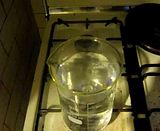
Boil for a decent period and compare the amount boiled off. I boiled for about 40mins and here's what came out. Soft boil on the left, hard boil on the right.
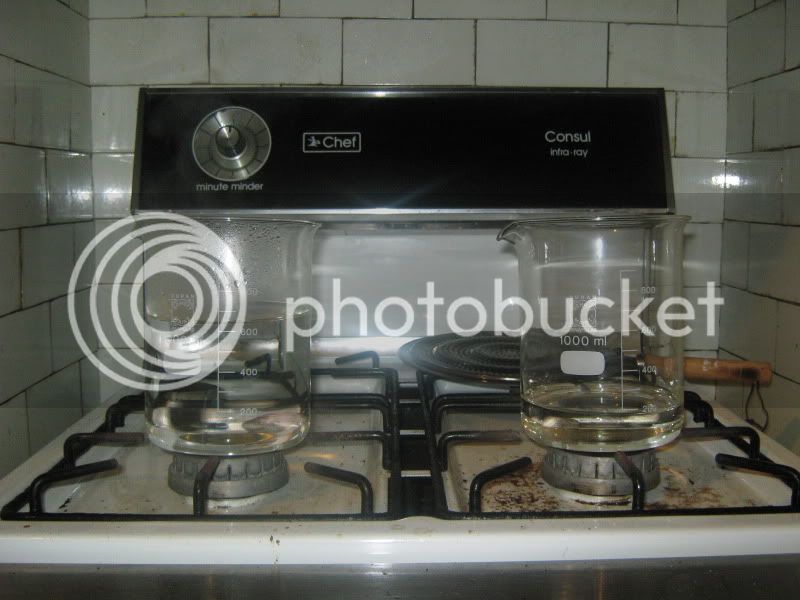
And its pretty obvious that I got the result I was expecting. Now its not brewing, its in little beakers on the stove, things would of course be different in a real world situation. But nonetheless, the only significant difference between those two beakers was the intensity of the boil... and the difference in boil off rates was I think you'll agree, quite large.
So I'd conclude from that experiment that while kettle diameter is one of and maybe the most important factor in determining evaporation rates, its certainly possible to at least make an impact on your kettle boil off by adjusting the amount of flame you shove into the bottom of your pot.
Another little experiment on the way shortly
TB
PS - SWMBO will probably kill me if she finds out I posted something to the web that includes a picture of how dirty out stovetop currently is. We did just finish cooking dinner though, and I beat the shit out of that stove with brewing stuff
Just to be clear though - so as not to make it seem like I am carving off a separate thread in which to continue arguing with Nick in a more concentrated fashion, I have not and don't really intend to cover the particular evaporation topic we have been bickering about about.
What I am interested in is this.
Can Evaporation Rate be changed by adjusting your boil vigour via increasing or reducing your applied heat??
One that's always annoyed me. I am often assured that the primary factor in evaporation rate is the diameter and thus surface area of your brew kettle. Boiling harder or softer will either not or only very minimally change the amount that you boil off. I am sure that this is rubbish - its plain to me that if you boil harder, more will boil away. So here's my little test - take it with the grain of salt that I am trying to confirm my pre-conception rather than simply seeking raw data.
Start with 2 x 1L Schott Duran beakers, obviously not identical, but pretty damn similar - filled to the 900ml line. Bring to a hard boil on separate burners of the stove.

Once boiling, turn off heat momentarily and adjust back to the 900ml line with boiling water from the kettle

Bring back to full boil very briefly, then adjust heat down on one burner so the water is boiling actively but "softly" - make the other beaker boil "hard"

Photos are a hard way to judge boil intensity, so here's a video too if you are willing to waste the bandwidth.

Boil for a decent period and compare the amount boiled off. I boiled for about 40mins and here's what came out. Soft boil on the left, hard boil on the right.

And its pretty obvious that I got the result I was expecting. Now its not brewing, its in little beakers on the stove, things would of course be different in a real world situation. But nonetheless, the only significant difference between those two beakers was the intensity of the boil... and the difference in boil off rates was I think you'll agree, quite large.
So I'd conclude from that experiment that while kettle diameter is one of and maybe the most important factor in determining evaporation rates, its certainly possible to at least make an impact on your kettle boil off by adjusting the amount of flame you shove into the bottom of your pot.
Another little experiment on the way shortly
TB
PS - SWMBO will probably kill me if she finds out I posted something to the web that includes a picture of how dirty out stovetop currently is. We did just finish cooking dinner though, and I beat the shit out of that stove with brewing stuff





